The new Fifty Tales at Sea Park, PJ offers an exciting twist to Malaysian Chinese cuisine
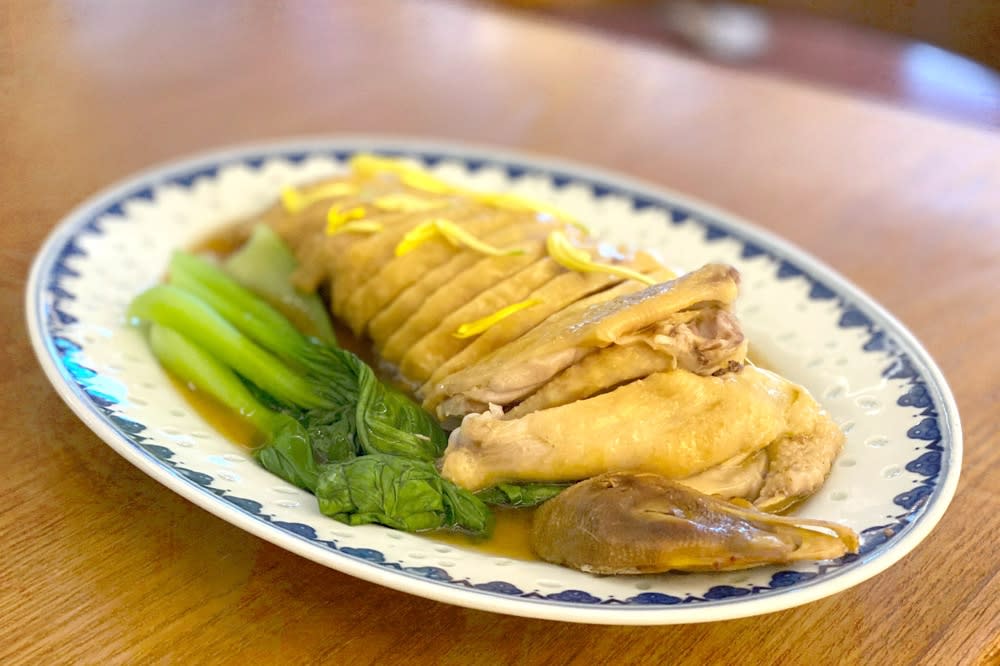
PETALING JAYA, Sept 19 — What looks like a pak cham gai (poached chicken) but eats more like a chicken roulade? If you are dining at Fifty Tales, chances are it’s their special Steamed Corn-fed Chicken.
Chef-owner Aaron Phua tells me and my dining companions that they first debone the entire bird, taking care to leave the skin intact, then remove the meat to mince and season it, before stuffing the skin with the minced chicken.
It’s quite a lot of effort, but that is the hallmark of the team at Fifty Tales, now in its new location at Sea Park, PJ.
Having started out as a noodle restaurant in Bandar Sri Damansara in 2019, Fifty Tales has weathered the pandemic and grown into a full-fledged Malaysian Chinese restaurant.
The interior has an elegant yet calming ambience, the décor illuminated by delicate touches from bonsai to paper lanterns. The effect is pleasing, perhaps to slowly whet one’s appetite.
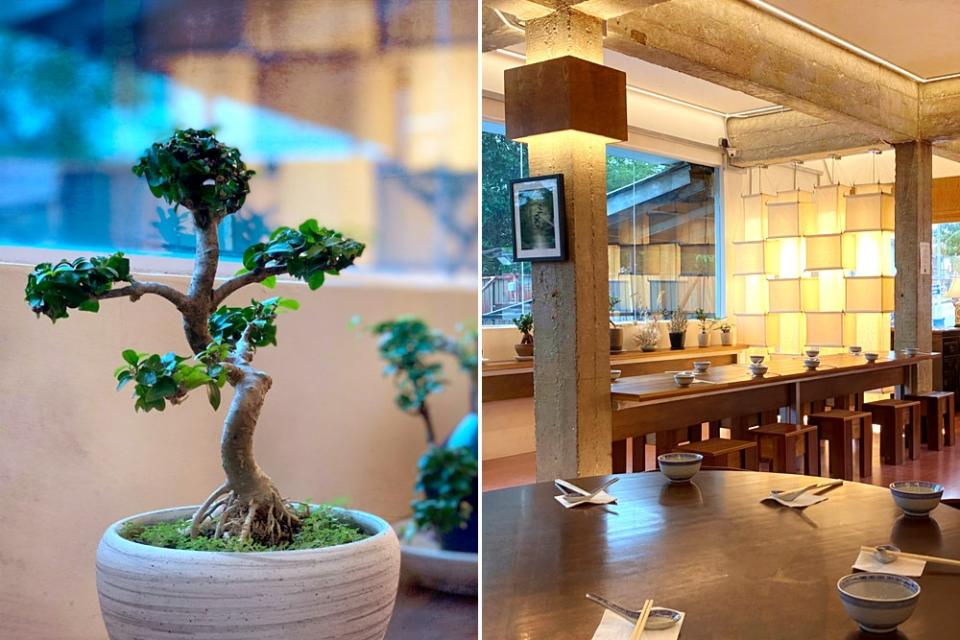
From bonsai to paper lanterns, Fifty Tales has an elegant yet calming ambience.
Of course, that can also be achieved by observing the busy chefs in action inside the open kitchen. The cuisine here draws from the cuisines of the different dialects such as Cantonese, Teochew and Hokkien, and even Peranakan.
Phua is joined by his co-founders, Bimmy Soi, who was trained in Melbourne, specialising in dim sum and dumplings at traditional Cantonese restaurants; and Aaron Khor, a fine dining veteran and now the head chef of the restaurant.
First, to quench our thirst, we order a round of their house-made fizzy beverages — from the non-alcoholic Fizzy Luo Han Guo to low ABV% beers. East Meets West pairs beer with homemade luo han guo syrup while the Hamkat Beer is flavoured with salted calamansi.
Refreshing.
While waiting for our food, our eyes wander to a well-placed chiller in one of the corners. This is for the restaurant’s dry-aged poultry, from dry-aged duck ham to dry-aged chicken legs.
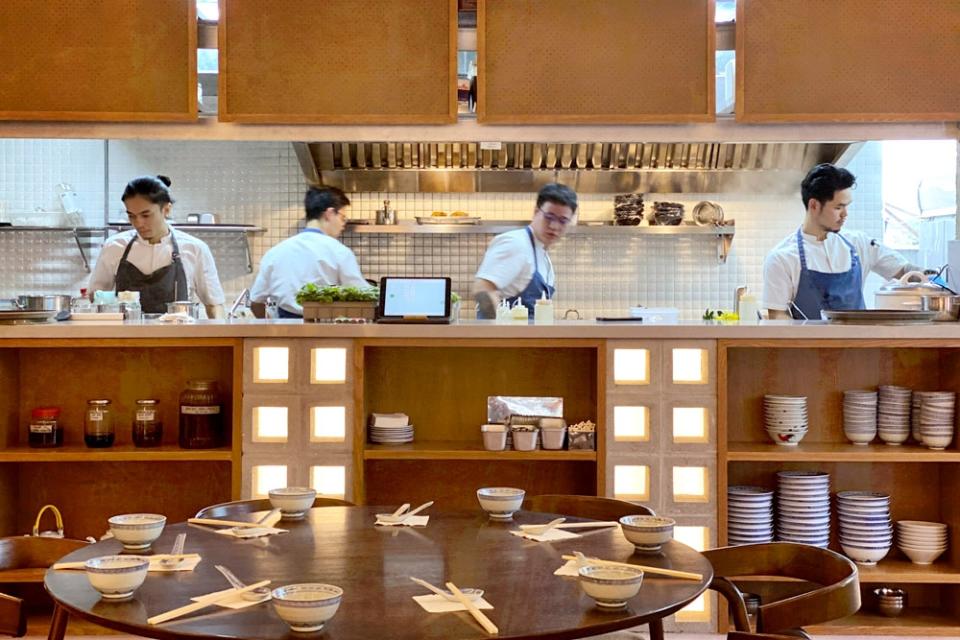
Chefs in action inside the open kitchen.
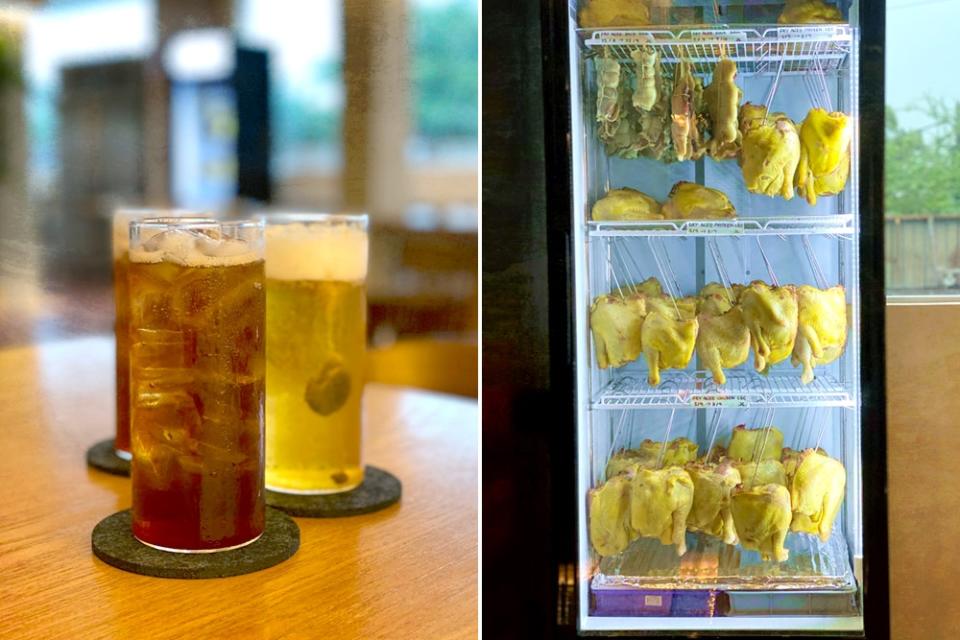
House-made fizzy beverages (left). The chiller for dry-aged poultry and meat (right).
Which brings us back to our star dish, the Steamed Corn-fed Chicken.
Its name in Mandarin — yùmǐ jī liǎng shí — means "Corn-fed Chicken, Two Meals”, which is a nod to how the poultry is prepared in two ways, the aforementioned boneless approach for the meat and skin, as well as a clear broth from the bones.
The soup tastes like the very essence of the bird concentrated in a single bowl. Or three bowls, as it were, as our server carefully pours the broth from a teapot into individual bowls. A nice touch, an elegant yet casual nod to service at fine dining establishments.
And this encapsulates what I find most remarkable about the new Fifty Tales: how they walk the fine line between a relaxed restaurant (no need for suits and ties!) and delivering the same level of food you would expect at a Michelin-starred eatery.
A fine balance, and one they excel in.
Given the work involved, this Steamed Corn-fed Chicken requires pre-ordering. For those seeking poultry without planning ahead, try their Cold Drunken Duck (liángbàn zuì yā).
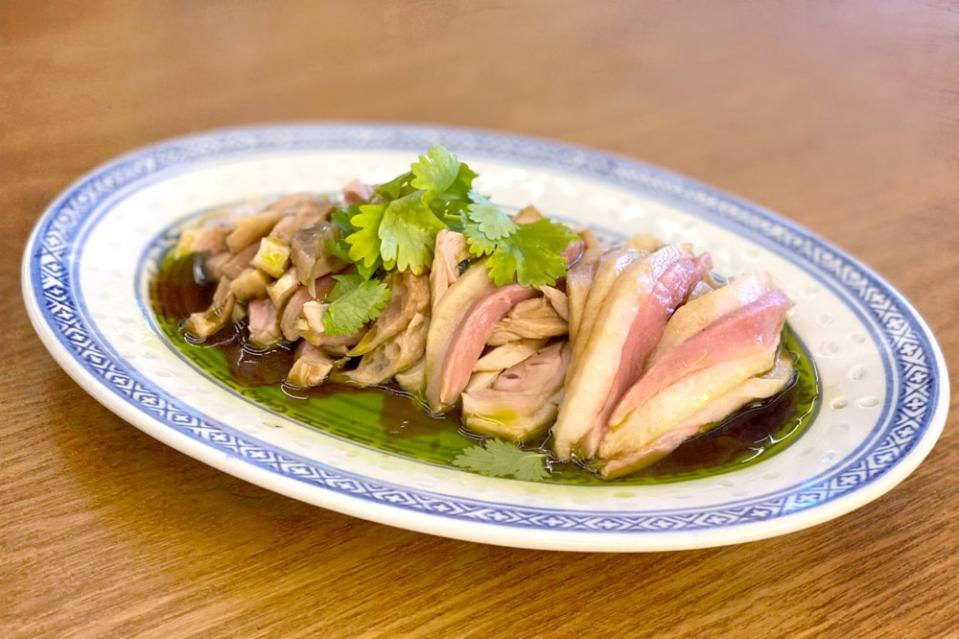
Cold Drunken Duck.
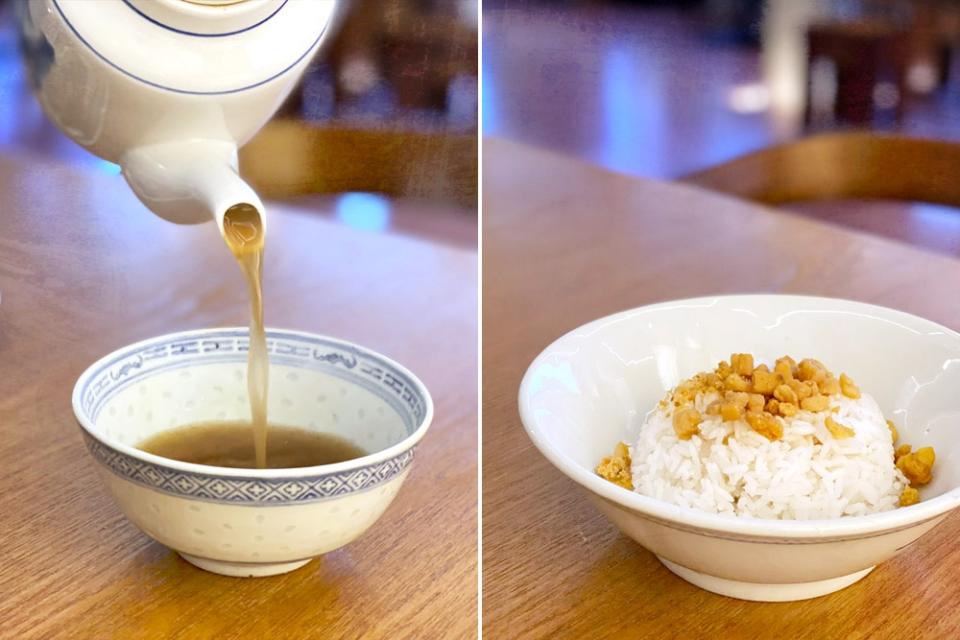
Pouring the broth of the Steamed Corn-fed Chicken (left). Pork Lard Rice (right).
A twist on the traditional Shanghainese cold dish zuì jī (literally "drunken chicken”), the duck is surprisingly tender. Sweetened with gula apong (Sarawakian nipa palm sugar) and further elevated with a soy glaze and spring onion oil, this one is a keeper.
For greens (actual leafy vegetables, I mean, and not just the verdant spring onion oil above), we opt for a plate of the Dragon Chives & Century Egg Sauce (pídàn jiàng tàn shāo qīnglóng cài).
With baby purple spinach and celtuce, the requirement for greens is more than satisfied here; the use of chicken fat chilli and fried anchovies adds a hit of umami to the already very moreish century egg sauce.
One of the chefs is part Peranakan, so that culinary heritage is tapped for the Grilled Tiger Prawns, Salted Fish Curry (tàn shāo xiān xiā xián yú gālí). The unmistakably nostalgic additions of fried eggplant and okra complete this dish. Don’t waste a drop of that sensational curry!
For carbohydrates, we have Truffle Yeasted Noodles (hēi sōnglù mì zhī bàn miàn), made from sourdough from Dou Dou Bake. Looks simple enough, but when the noodles are finished with roasted chicken wing sauce and kulim oil, the flavours make an impression.
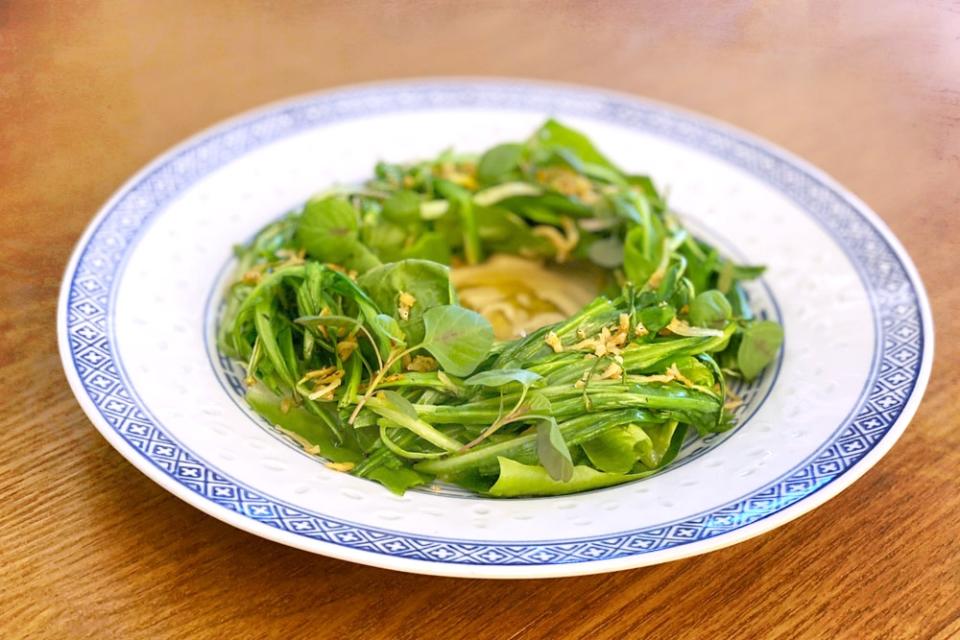
Dragon Chives & Century Egg Sauce.
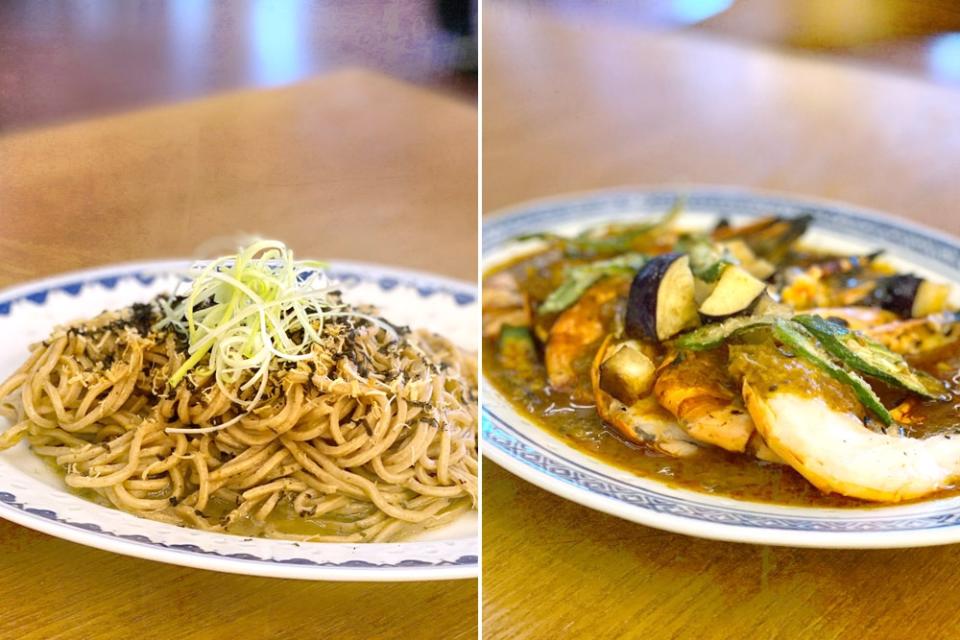
Truffle Yeasted Noodles (left). Grilled Tiger Prawns, Salted Fish Curry (right).
(Kulim, a local fruit also known as bawang hutan or "jungle garlic” has pungent notes of garlic, shiitake mushrooms and even truffles.)
Given all the delicious gravies, more starches are sorely needed. So we order a bowl of their signature Pork Lard Rice (zhū yóu zhā bàn fàn). Crispy nuggets of fried pork lard atop fluffy steamed white rice — what more could we ask for?
Other dishes include Claypot Steamed Red Snapper Fillet (shāguō jú hóng diāo yú) with pickled mustard greens (ham choi), plum wine and melon; Abalone Steamed Eggs (bàoyú zhēng shuǐ yādàn), drizzled with dried oyster oil and flavoured with 32-day-aged duck ham; and Sweet Cabbage (tàn shāo báicài) with spiced black vinegar, chilli oil and water celery.
Phua plans to change the Cincai Dinner menu every quarter so diners will be kept bowled over with seasonal dishes. This also means the restaurant will grow with time, finding its footing in a post-pandemic world, as tastes shift swiftly too.
But this is not about trends but building something more substantial. Not an F&B empire (at least not yet) but learning how best to delight palates and reward curious minds.
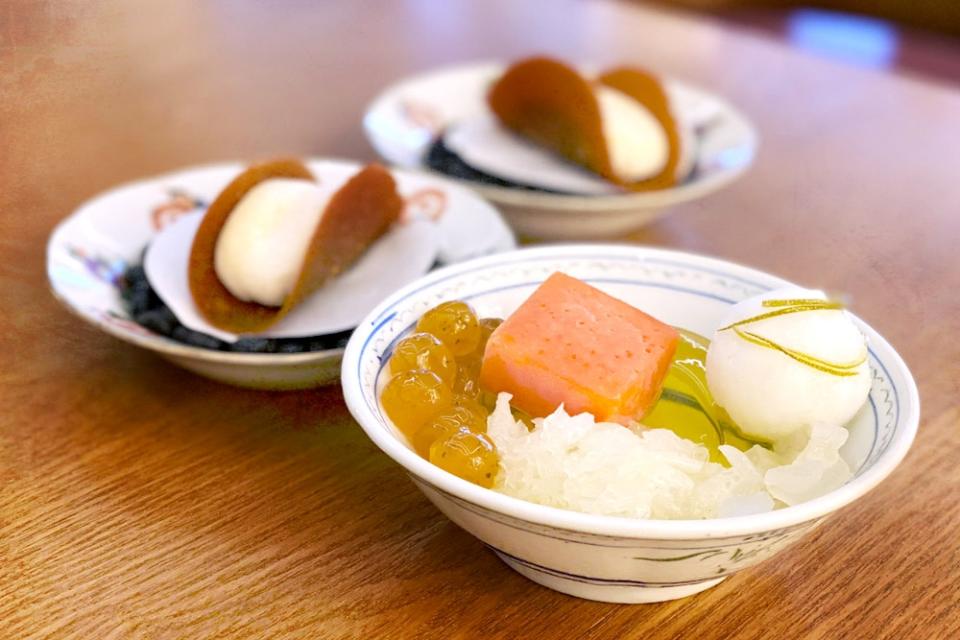
Desserts include 50T Aiyu Jelly (front) and Duck Egg Kaya Mochi (back).
We end our Cincai Dinner with dessert (there are only two options for now). The Duck Egg Kaya Mochi is what draws our attention first. The "QQ” mochi is filled with rich kaya made from duck eggs and wrapped with a cashew nut taco for easy picking.
Yet it is the 50T Aiyu Jelly that truly stuns us: the now ubiquitous Taiwanese jelly is paired with goji berry boba, candied limes, frozen papaya and white fungus. It’s like the best chilled tongsui you never thought you needed.
This is what we hope stays on the menu for posterity. Indeed, given the calibre of their offerings and the passion behind the kitchen craftsmen here, we are rooting for Fifty Tales to remain a fixture of our Malaysian food scene for posterity too.
Well done, all of you!
Fifty Tales
No. 19, Jalan 21/11B, Sea Park, PJ
Open daily (except Wed closed) for lunch 12-4pm & dinner 6-10pm
Phone: 012-249 2697
Web: fiftytales.com
For more slice-of-life stories, visit lifeforbeginners.com.
* Follow us on Instagram @eatdrinkmm for more food gems



